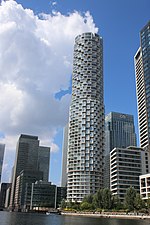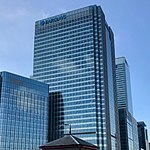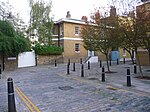Wood Wharf

Wood Wharf is a 23 acre site in Canary Wharf, London. It is currently under construction to provide offices, residential homes and retail space. The site is next to Canary Wharf. Wood Wharf will contain 5 million square feet of space, which will include 2 million sq ft of office space, 3,330 residential homes, 3.6 hectares (8.9 acres) of public spaces, and 380,000 sq ft of shops, restaurants and space for community use. It is estimated to be completed in 2023.The architects for the site include Allies and Morrison, Darling Associates, KPF, Herzog & de Meuron, Pilbrow & Partners, Stanton Williams Architects, Grid Architects, and Patel Taylor. The masterplan has been designed by Allies and Morrison Architects.
Excerpt from the Wikipedia article Wood Wharf (License: CC BY-SA 3.0, Authors, Images).Wood Wharf
West Lane, London Blackwall
Geographical coordinates (GPS) Address Nearby Places Show on map
Geographical coordinates (GPS)
| Latitude | Longitude |
|---|---|
| N 51.502652777778 ° | E -0.011458333333333 ° |
Address
1 Bellevue Square
West Lane 1
E14 9NJ London, Blackwall
England, United Kingdom
Open on Google Maps










